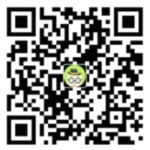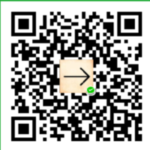1993年6月四级测验及谜底
Passage Two
Questions 26 to 30 are based on the following passage.
For some time past it has been widely accepted that babies-and other creatures-learn to do things because certain acts lead to "rewards"; and there is no reason to doubt that this is true. But it used also to be widely believed that effective reward, at least in the early stages, had to be directly related to such basic physiological (心理的) "drives" as thirst or hunger. In other words, a baby would learn if he got food or drink of some sort of physical comfort, not otherwise.It is now clear that this is not so. Babies will learn to behave in ways that produce results in the world with no reward except the successful outcome.Papousek began his studies by using milk in the normal way to "reward" the babies and so teach them to carry out some IT movements, such as turning the head to one side or the other. Then he noticed that a baby who had had enough to drink would refuse the milk but would still go on IT the learned response with clear signs of pleasure. So he began to study the children's responses in situations where on milk was provided. He quickly found that children as young as four months would learn to turn their heads to right or left if the movement "switched on". A display of lights-and indeed that they were capable of learning quite complex turns to bring about this result, for instance, two left or two right, or even to make as many three turns to one side.Papusek's light display was placed directly in front of the babies and he made the interesting observation that sometimes they would not turn back to watch the lights closely although they would "smile and bubble" when the display came on. Papousek concluded that it was not primarily the sight of the lights which pleased them, it was the success they were achieving in solving the problem, in mastering the skill, and that there exists a fundamental human urge to make sense of the world and bring it under intentional control.26.According to the author, babies learn to do things which _____.(A) are directly related to pleasure (C) will bring them a feeling of success(B) will meet their physical needs (D) will satisfy their curiosity27.Papousek noticed in his studies that a baby _____.(A) would make learned responses when it saw the milk(B) would carry out learned movements when it had enough to drink(C) would continue the IT movements without being given milk(D) would turn its head to right or left when it had enough to drink28.In Papousek's experiment babies make learned movements of the head in order to ______.(A) have the lights turned on (C) please their parents(B) be rewarded with milk (D) be praised29.The babies would "smile and bubble" at the lights because ______.(A) the lights were directly related to some basic "drives"(B) the sight of the lights was interesting(C) they need not turn back to watch the lights(D) they succeeded in "switching on" the lights30.According to Papousek, the pleasure babies get in achieving something is a reflection of _____.(A) a basic human desire to understand and control the world(B) the satisfaction of certain physiological needs(C) their strong desire to solve complex(D) a fundamental human urge to display their learned skills
关键字:英语四级测验谜底 四级测验谜底 计算机四级测验谜底 2008年四级测验谜底 07英语四级测验谜底
上篇:
白洁PETS系列教诲(六)
下篇:
托福(TOEFL)作文测验中常用的套句






